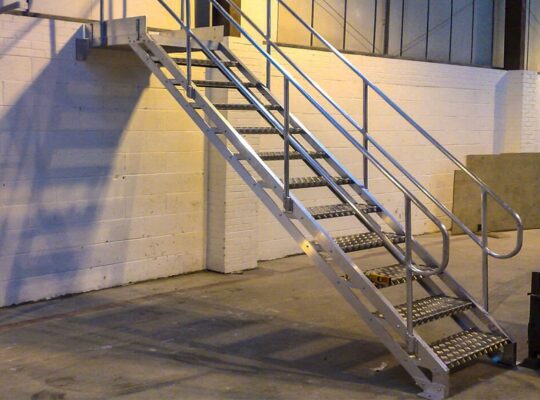Are you looking to build a new commercial or industrial construction project? Getting an accurate preliminary estimate is crucial for assessing feasibility, creating budgets, and planning designs. However, finding a qualified company to provide comprehensive, reliable preliminary estimating services can be challenging. This article outlines key tips for choosing the right preliminary estimate provider for your steel construction needs.
What is a preliminary estimate?
A preliminary estimate is an initial assessment of the projected costs for a construction project, created in the early planning and design stages before detailed drawings are completed. Preliminary estimates for steel construction projects require detailed steel takeoffs, tallying all necessary structural and miscellaneous steel based on limited design details. Accurate steel takeoffs form the foundation of a dependable preliminary estimate. The right provider follows rigorous standards for quantification during this initial estimating stage, when details remain unfinalized.
Choose specialized steel estimation services.
Not all estimators have specialized expertise in steel construction. Look for providers specifically focused on major steel takeoff services for industries like commercial buildings, stadiums, airports, bridges, and infrastructure. Experience with your specific project type ensures familiarity with intricate design details and code specifications. For example, stadium projects involve more complex steel member configurations than basic warehouses. Specialized steel takeoff and estimating services enable the most precise projections of steel requirements and costs.
Experience Counts
The depth of experience should encompass both hands-on construction expertise as well as years specifically providing professional estimating services. On average, 10-15 years of experience in steel estimating improves judgment for tackling diverse projects and predicting nuances that sprout as final drawings evolve. Regional construction familiarity also helps providers participate in local code discussions and grasp inspectors’ expectations. Validate these details when vetting potential partners for your preliminary estimate needs.
Ask about their quantification process.
The quantification methodology directly impacts estimation accuracy and reliability. Thoroughly examine prospective estimators’ quantification processes before engaging services. What software do they utilize for takeoffs? How many checkers reexamine takeoff quantities for verification? By probing their techniques, you gain assurance of their attention to detail in tallying all required steel materials down to the smallest pieces. Avoid estimators relying solely on software checks without human examination. The strongest takeoff processes combine independent software measurement, duplication of efforts among an estimating team, examination of output for gaps, and specialized expertise for scrutinizing mismatches between projected versus typical quantities for the project type.
Compare the range of services offered.
Ideally, your chosen preliminary estimating services should offer end-to-end preconstruction services spanning:
- Preliminary Estimates: Initial high-level cost approximations
- Conceptual Estimates: More defined estimates as concept designs progress
- Design Development Estimates: Continued updates with emerging specifications
- Control Estimates: Detailed estimates setting cost targets aligning with final drawings
This full spectrum enables continuity as your plans advance toward construction. A partner continuously involved from early schematics through preconstruction estimating helps advise cost-containment strategies as commitments arise. They serve as an invaluable resource for weighing the expenses of design decisions relative to budget goals. Consider the breadth of estimating services each company provides when selecting your best-fit option.
Check reviews and references.
Seeking third-party testimonials represents a final prudent step for qualifying a preliminary estimate provider’s expertise. Review online sources for client feedback and industry reputation. For more candid insights, request several client references and inquire about their estimation accuracy, report quality, on-time delivery, and communication effectiveness. By emphasizing reference checks, you gain more transparency for anticipating the provider’s performance in supporting your crucial planning decisions through uncertainty.
Ask about their BIM capabilities.
Building Information Modeling (BIM) integrates 3D modeling with rich product data to enable greater collaboration among project teams. Utilizing BIM for steel takeoffs and estimating improves coordination for detecting clashes early. When interviewing prospective partners, ask specifics about their team’s skill with leading BIM software, experience with model-based estimating, and processes for connecting BIM with estimation workflows. The most capable teams harness BIM’s dimensional precision for accurate steel quantities, plus data centralization benefits over a project’s lifespan.
Inquire about on-site appraisals.
On certain projects, on-location visual inspections prove prudent for validating document-based takeoff quantities or identifying atypical site conditions demanding specialty materials not obvious from drawings alone. Before selecting an estimator, clarify if they offer on-site quantification appraisals as an integrated service when it is beneficial. The ideal partner has the flexibility to conduct pre-estimate site visits for projects with high complexity or uncertainties that complicate projections.
Discuss options for ongoing estimate updates.
Design changes frequently arise as schematics progress toward final construction drawings. Continuous cost estimate updates help you assess the fiscal outcomes of emerging revisions. When initially choosing an estimating firm, explore their capabilities for repeatedly revising estimates aligned with your evolving documents. Can they cost-compare the alternative material options under consideration? What is their process for rapidly evaluating design change impacts on budgets as decisions approach? A longtime partner intimately familiar with your plans can nimbly churn out estimate updates that preserve your project’s financial integrity.
Probe Their Understanding of Cost Trends
The accuracy of cost approximations hinges greatly on an estimator’s grasp of continually fluctuating construction expense trends. During your selection process, assess indicators of the company’s market intelligence, like whether they:
- Track historical bids to inform baseline metrics.
- Monitor real-time cost shifts for high-demand materials.
- Regularly converse with vendors to capture price changes.
- Participate in regional building committees to gather insights.
This background arms estimators with current data for properly aligning preliminary projections despite volatility. It also equips them to advise early buying to lock in savings. Their market perspectives bolster estimate reliability, even amid uncertainty.
Conclusion
Choosing the right preliminary estimating services lays the groundwork for properly scoping and budgeting your structural steel construction endeavors. But not all steel estimators offer equal competence. Use these tips for filtering options: Seek specialized expertise, validate years of experience in steel estimating, examine quantification procedures, review the range of preconstruction services available, and check references. Companies like Remote Estimation meet these standards for reliable steel takeoff and cost modeling. With accurate preliminary estimates in hand, you can confidently progress schematic designs while containing expenses. Let experienced steel estimators like Remote Estimation lend their skills to providing actionable plans aligned with your project vision and budget.










